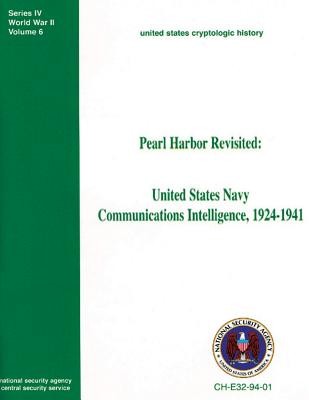
- We will send in 10–14 business days.
- Author: Center for Cryptologic History
- Publisher: CreateSpace Independent Publishing Platform
- Year: 2012
- Pages: 106
- ISBN-10: 1478344296
- ISBN-13: 9781478344292
- Format: 21.6 x 28 x 0.6 cm, minkšti viršeliai
- Language: English
- SAVE -10% with code: EXTRA
Reviews
Description
This is the story of the U.S. Navy's communications intelligence (COMINT) effort between 1924 and 1941. It races the building of a program, under the Director of Naval Communications (OP-20), which extracted both radio and traffic intelligence from foreign military, commercial, and diplomatic communications. It shows the development of a small but remarkable organization (OP-20-G) which, by 1937, could clearly see the military, political, and even the international implications of effective cryptography and successful cryptanalysis at a time when radio communications were passing from infancy to childhood and Navy war planning was restricted to tactical situations. It also illustrates an organization plagues from its inception by shortages in money, manpower, and equipment, total absence of a secure, dedicated communications system, little real support or tasking from higher command authorities, and major imbalances between collection and processing capabilities. It explains how, in 1941, as a result of these problems, compounded by the stresses and exigencies of the time, the effort misplaced its focus from Japanese Navy traffic to Japanese diplomatic messages. Had Navy cryptanalysts been ordered to concentrate on the Japanese naval messages rather than Japanese diplomatic traffic, the United States would have had a much clearer picture of the Japanese military buildup and, with the warning provided by these messages, might have avoided the disaster of Pearl Harbor.
EXTRA 10 % discount with code: EXTRA
The promotion ends in 21d.06:23:52
The discount code is valid when purchasing from 10 €. Discounts do not stack.
- Author: Center for Cryptologic History
- Publisher: CreateSpace Independent Publishing Platform
- Year: 2012
- Pages: 106
- ISBN-10: 1478344296
- ISBN-13: 9781478344292
- Format: 21.6 x 28 x 0.6 cm, minkšti viršeliai
- Language: English English
This is the story of the U.S. Navy's communications intelligence (COMINT) effort between 1924 and 1941. It races the building of a program, under the Director of Naval Communications (OP-20), which extracted both radio and traffic intelligence from foreign military, commercial, and diplomatic communications. It shows the development of a small but remarkable organization (OP-20-G) which, by 1937, could clearly see the military, political, and even the international implications of effective cryptography and successful cryptanalysis at a time when radio communications were passing from infancy to childhood and Navy war planning was restricted to tactical situations. It also illustrates an organization plagues from its inception by shortages in money, manpower, and equipment, total absence of a secure, dedicated communications system, little real support or tasking from higher command authorities, and major imbalances between collection and processing capabilities. It explains how, in 1941, as a result of these problems, compounded by the stresses and exigencies of the time, the effort misplaced its focus from Japanese Navy traffic to Japanese diplomatic messages. Had Navy cryptanalysts been ordered to concentrate on the Japanese naval messages rather than Japanese diplomatic traffic, the United States would have had a much clearer picture of the Japanese military buildup and, with the warning provided by these messages, might have avoided the disaster of Pearl Harbor.


Reviews